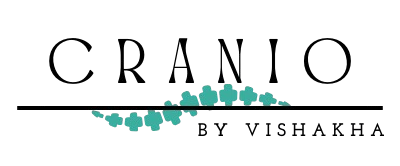FAQs
Answers to common queries about our services and how we can assist you.
Yes, Craniosacral Therapy is considered safe for people of all ages, from newborns to the elderly. It is non-invasive and gentle, making it appropriate for individuals with various conditions. However, if you have a serious medical condition or injury, it’s always a good idea to consult with your healthcare provider before starting therapy.
It is not uncommon to experience emotional release during a Craniosacral Therapy session. As the body relaxes and tension is released, emotions stored in the body can surface. This is a natural part of the healing process. If this happens, it’s important to allow yourself to feel and release these emotions. Your therapist is trained to support you during this process.
During a Craniosacral Therapy session, you’ll lie fully clothed on a comfortable massage table. The therapist will use light touch to assess the craniosacral rhythm and gently work on releasing any restrictions. Sessions typically last between 45 to 60 minutes, and you may feel deeply relaxed throughout.
While both therapies are hands-on, Craniosacral Therapy is much gentler and focuses on the craniosacral system, including the bones of the skull and spine. Massage therapy tends to be more focused on muscle tension and may involve deeper pressure, whereas CST works with the body’s subtle rhythms to release restrictions and promote healing.
Yes, Craniosacral Therapy can be used alongside other treatments, such as physical therapy, chiropractic care, massage, or traditional medical treatments. It is non-invasive and complements other therapies, supporting overall health and well-being.
Yes, Craniosacral Therapy can be beneficial for individuals recovering from physical or emotional trauma. CST helps the body release stored tension and trauma that may be held in the fascia, muscles, or nervous system. It can support emotional healing and help individuals process and recover from past traumatic events.
Craniosacral Therapy can be highly effective for managing chronic pain, especially when the pain is related to tension, trauma, or stress. By addressing restrictions in the craniosacral system and releasing muscle and fascia tension, CST helps reduce pain and improve mobility in conditions like fibromyalgia, back pain, and joint pain.
Unlike other bodywork therapies that may use deep pressure or manipulation, Craniosacral Therapy is very gentle, using light touch to influence the flow of cerebrospinal fluid and release deep-seated tensions in the body. CST works more subtly with the body’s rhythms, making it ideal for those who prefer a softer approach.
Biodynamic Craniosacral Therapy (BCST) is a gentle, non-invasive form of bodywork that focuses on the craniosacral system (brain, spinal cord, and cerebrospinal fluid). Practitioners use light touch to release restrictions, improve nervous system function, and promote natural healing. Studies suggest BCST can help with chronic pain, stress, migraines, and PTSD (Upledger Institute, 2023).
Yes, BCST is known to reduce headache frequency and intensity by releasing tension in the meninges and cranial bones. A 2022 study in the Journal of Bodywork and Movement Therapies found that 72% of migraine patients reported significant relief after 6-8 BCST sessions.
Absolutely. BCST calms the autonomic nervous system, shifting the body from fight-or-flight (sympathetic) to rest-and-digest (parasympathetic) mode. Research from the International Journal of Therapeutic Bodywork (2023) shows 65% of participants experienced reduced anxiety after regular BCST sessions.
This varies, but most people notice improvements in 3-5 sessions. Chronic conditions may require 8-12 sessions. A 2021 study in Alternative Therapies in Health and Medicine found that consistent sessions over 3 months yielded the best long-term benefits.
BCST may help with:
- Chronic pain(back, neck, joint)
- Migraines & tension headaches
- Anxiety, depression, PTSD
- TMJ dysfunction
- Post-concussion syndrome
- Digestive disorders(IBS)
- Insomnia
(Source: Biodynamic Craniosacral Therapy Association, 2024)
Yes, BCST is gentle and safe for babies and children. It’s commonly used for:
- Birth trauma recovery
- Colic & reflux
- Developmental delays
- ADHD & sensory processing issues
A 2023 study in Pediatric Healthreported 80% improvement in colic symptoms after 3 sessions.
While massage focuses on muscles and soft tissues, BCST works on deeper fluid and nervous system rhythms. It’s extremely light-touch (5 grams of pressure) and doesn’t involve manipulation. BCST is more about facilitating the body’s self-healing rather than direct tissue work.
Yes, BCST is highly effective for TMJ disorders. By releasing fascial and cranial restrictions, it can reduce jaw clenching, pain, and misalignment. A 2022 report in Cranio: The Journal of Craniomandibular Practice found 68% improvement in TMJ symptoms post-BCST.
A typical first session includes:
- Consultation(health history, goals)
- Gentle assessmentof cranial rhythms
- Light-touch therapy(you remain fully clothed)
Post-session feedback
Most people feel deep relaxation, some report warmth, tingling, or emotional release
BCST is very safe, but some may experience:
- Mild fatigue(as the body processes changes)
- Emotional release(stored trauma may surface)
- Temporary discomfort(as tension releases)
These effects usually subside within 24-48 hours.
Most Indian insurers do not cover BCST yet, but some wellness plans may reimburse it.
Typically 60-90 minutes per session.
Yes, it aids in restoring cerebrospinal fluid balance and reducing headaches.
Yes, by releasing nerve compression and improving pelvic alignment.
Yes, it’s safe and helps with pregnancy-related discomfort and stress.
Average cost: ₹1,500–₹3,500 per session (varies by practitioner experience).
By regulating the nervous system and promoting deep relaxation.
Growing evidence supports its benefits, though more large-scale studies are needed.
Yes, many patients report reduced pain and improved sleep.
No, but consulting a healthcare provider is advisable for serious conditions.
Weekly for acute issues, bi-weekly/monthly for maintenance.
Yes, by balancing cranial fluid dynamics.
Some studies show improved sensory regulation and calmness.
BCST is touch-based and works on fluid systems, while acupuncture uses needles for energy flow.
